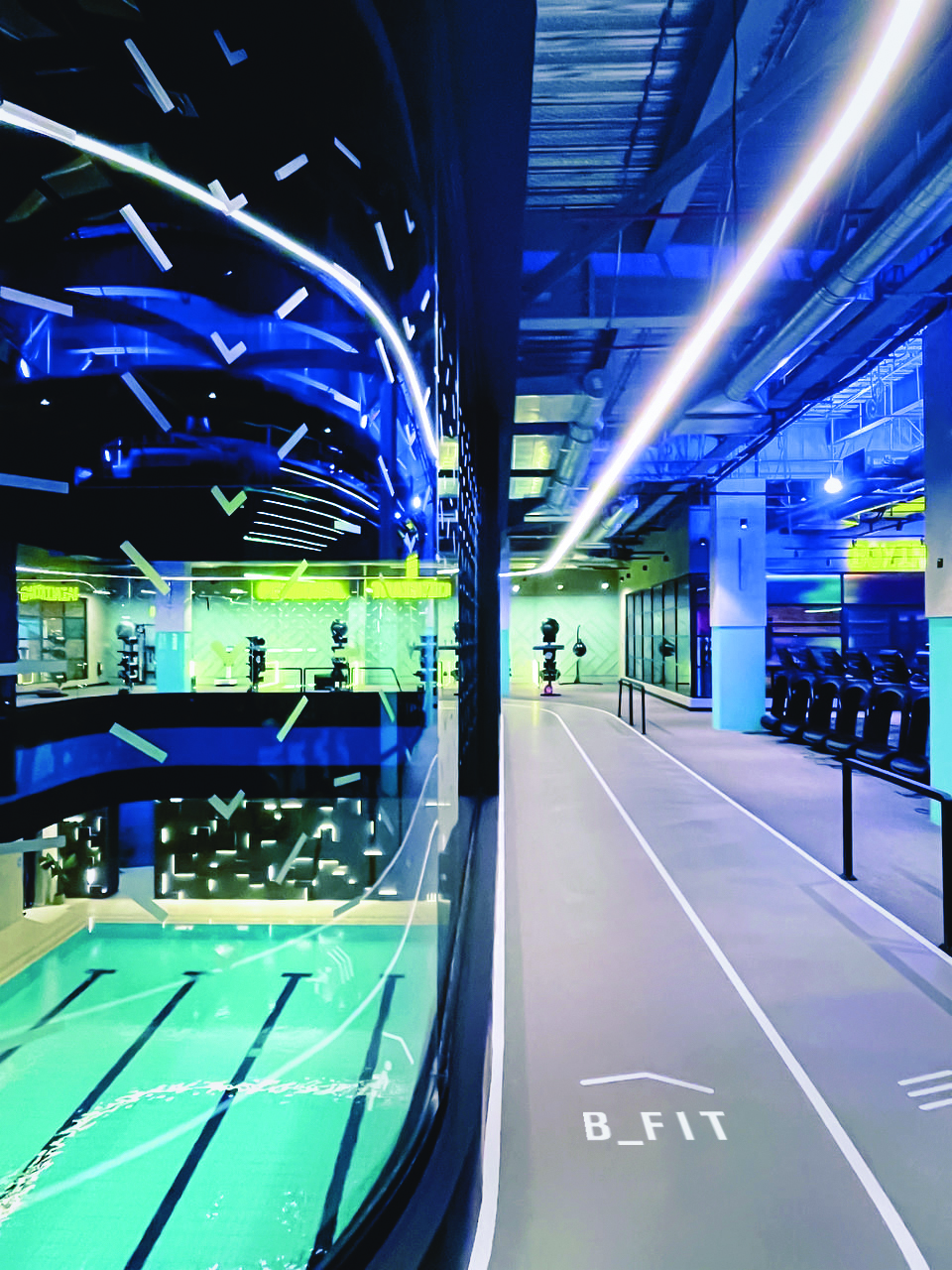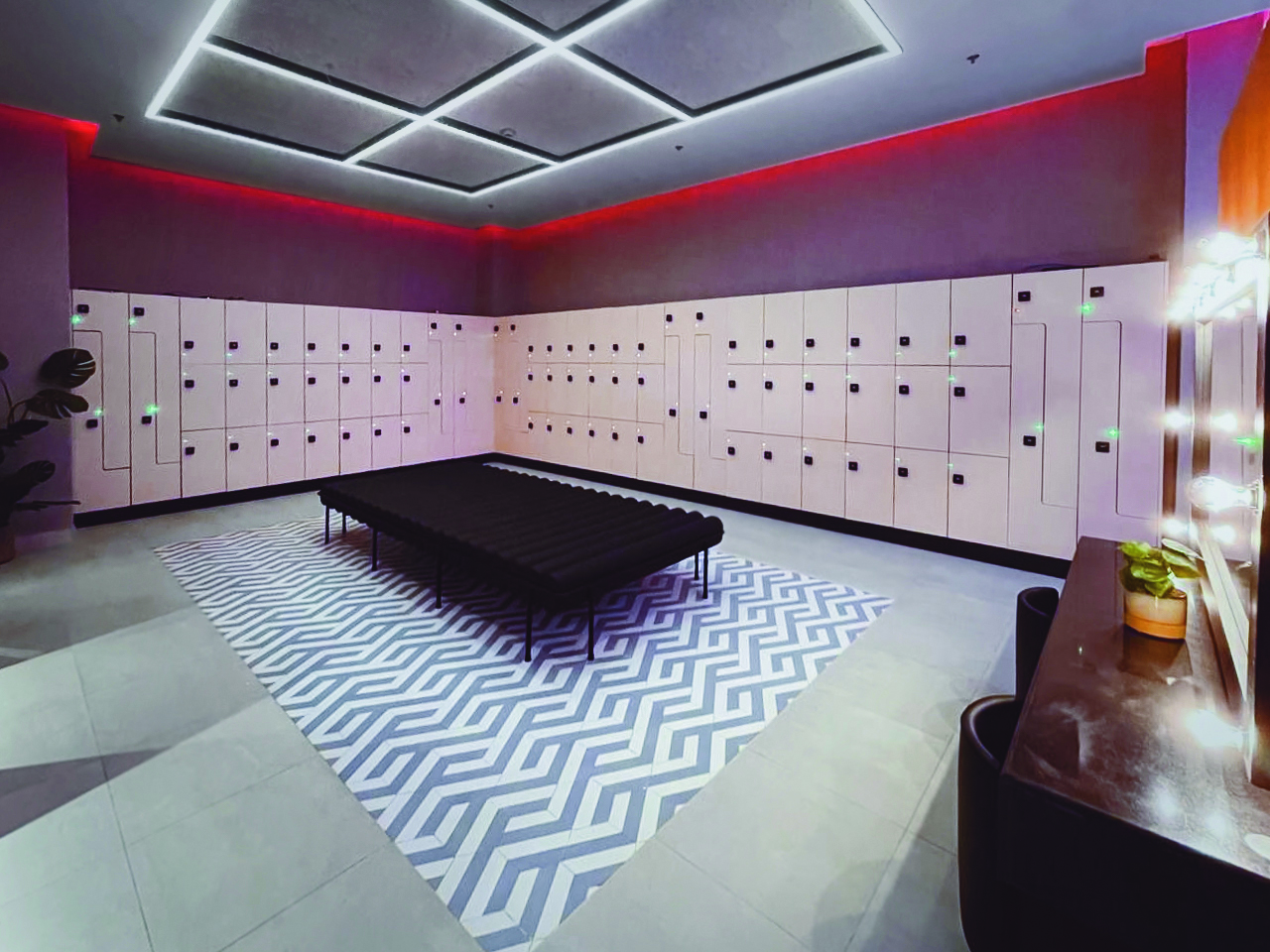ARMAH SPORTS is on a mission to reshape the fitness industry through innovation.
Owned by the Al Hagbani family, the group has enjoyed long success in the sector. It launched BodyMasters, the Kingdom of Saudi Arabia’s (KSA) first fitness chain in 1994, which it grew to 13 sites before exiting in 2006. In 2007, the company launched its successful fitness chain Fitness Time, which launched the KSA’s first full service female-fitness centre 10 years later. The family established Armah Sports Company in 2019 resulting in the launch of two fitness brands – B_FIT and Optimo. London-based interior architecture & design studio Shed conceived the overarching brand position, business identity, architecture and interior for both brands. “We’d worked on a gym environment concept for boxing legend, Evander Holyfield, some time ago, and after a personal trip to meet the Al Hagbani family, who own Armah Sports Company, I convinced them we could deliver a fresh and world class vision for the future of fitness in KSA. Our experience in designing progressive co-working spaces, health and wellbeing environments and retail seemed complimentary,” explains Nick Stringer, lead designer of the project and founder of Shed.
Tech gym of the future
B_FIT Jeddah is the first of many B_FIT gyms planned in KSA and nearby territories bringing a premium yet accessible smart gym experience to the masses using artificial intelligence, virtual reality, Amazon Alexa and IoT innovations. Shed’s brief was to design and re-imagine a next generation fitness training, lifestyle and wellbeing environment. The cliche of 'big box gyms’ was in need of re-inventing, having become stale and one dimensional. The team at Armah Sports were keen to push forward with a new generation of sports venue. The goal was to create a collaborative space to train body and mind, whilst delivering wellness via the latest smart technology available in fitness equipment. “B_FIT is the tech gym of the future and design was of paramount importance to enable the brand to build and grow in new territories as planned. We designed a bold, new brand standard for gyms with B_FIT, one that is instantly recognisable and befitting the innovation of their unique smart gym offer,” says Stringer. The 40,000sq ft facility includes a gym, personal training suites, 25m swimming pool, indoor running track, studios hosting boxing and martial arts classes, group cycling, yoga, pilates and HIIT training, as well as a café, retail and co-working space. Enhanced by the latest smart cardio and strength technology, B_FIT offers all the benefits of a big box gym without falling into gym stereotypes. Incorporating a touchless facial recognition system for entry and virtual reality and augmented reality offerings in the Innovation Lab, gym members can explore new ways to be active and try out simple fitness gamification. B_FIT is also the world’s first health club that utilises Amazon’s Alexa, where members can book classes and review trainers’ schedules and bios through this popular virtual assistant technology. “Designing a fitness environment for a mix of Gen Y Millennials and (post millennial) Gen Zs raised all sorts of questions regarding the way those users seek validity in their fitness goals and motivations in living a healthy life. It’s too simplistic to say that gyms now need to be instagrammable; that happens anyway with high quality designed environments. Our focus for Armah Sports was to develop a design concept for their new fitness brand that felt like a natural extension of the target gym-goer’s life,” explains Stringer.
call to disrupt targeted environments which only talked to a singular sector of the community, he says. “Equal rights and opportunity was a fresh take on attracting a new enlightened fitness fan, providing them with a place they could relate to and spend time in. We liked this idea of a new ‘tribe’ becoming advocates for the brand. The modern, future-looking aspects (be it Bauhaus or mid-century case study houses) were a nod to pushing design forward for the masses. There are some design clues, but it is more a subtle manifesto for the B_FIT ‘tribe' to subscribe to. Of course, at the end of the day the visitors to B_FIT will differ, and we have tried to mix the environment up to let people find their own centre of gravity.”
A collective experience
So, is this what the future of gym design looks like? “I think gym brands may well see more of a shift to a seamless convergence with co-working and recreation spaces. The use of technology is going to become a given, not the exception, but the bigger idea that might emerge is to integrate the gym experience as one part of a wellbeing/social/work environment. Technology will play a part mainly in fitness performance data but there are more fundamental possibilities,” says Stringer. B_FIT acknowledged this progression, but a natural further evolution might be to combine a more family-led approach to fitness, diet and mental health coupled with a social experience. Many brands talk about a holistic approach to this but enabling these to properly coexist is worth investigating, he says. “The family unit worldwide is under threat, I can see potential in engaging the whole family in a place that speaks to them all individually, as well as collectively. I think in many parts of the world an element of disconnect between family, health and society is visible. “This translates into problems with a sedentary lifestyle. This is especially true of Saudi Arabia which has a deteriorating health record and for example is second top of the list for diabetes. But looking forward positively, if you are going to be egalitarian, then you have to bring all the people with you not just the few.”

